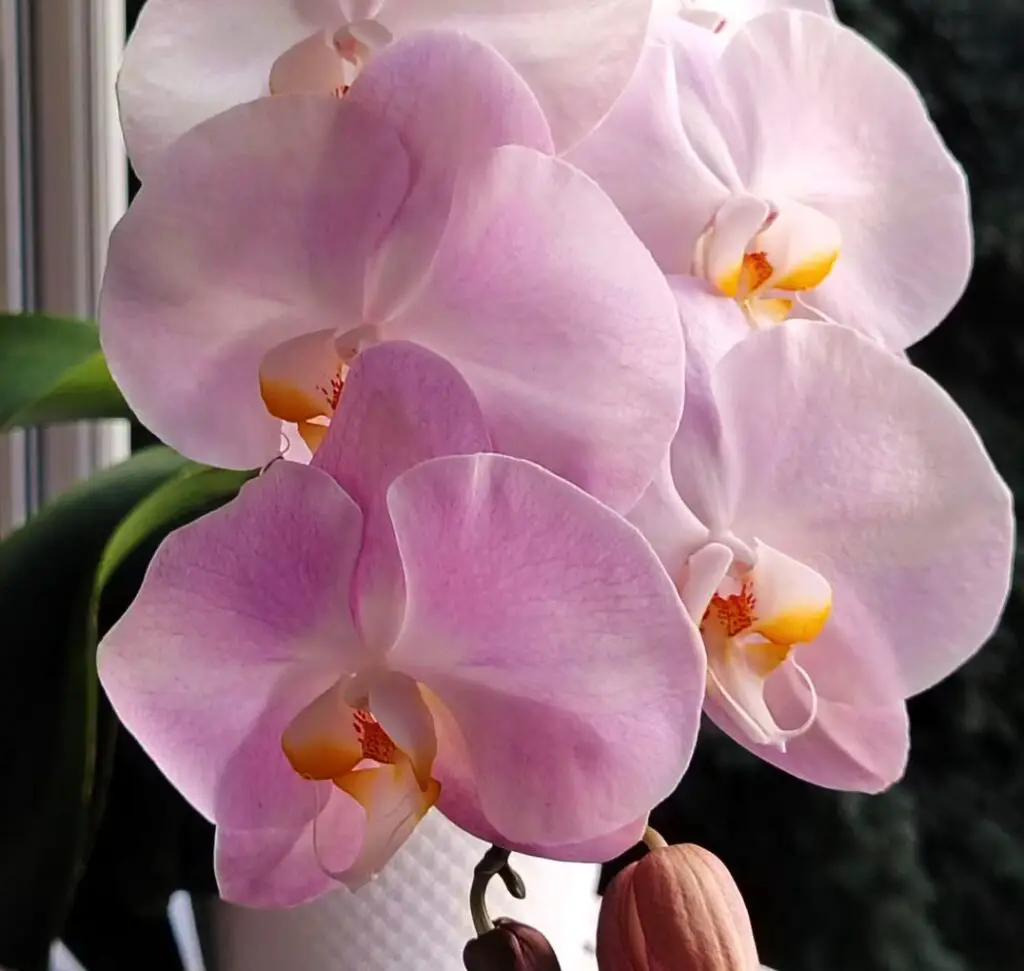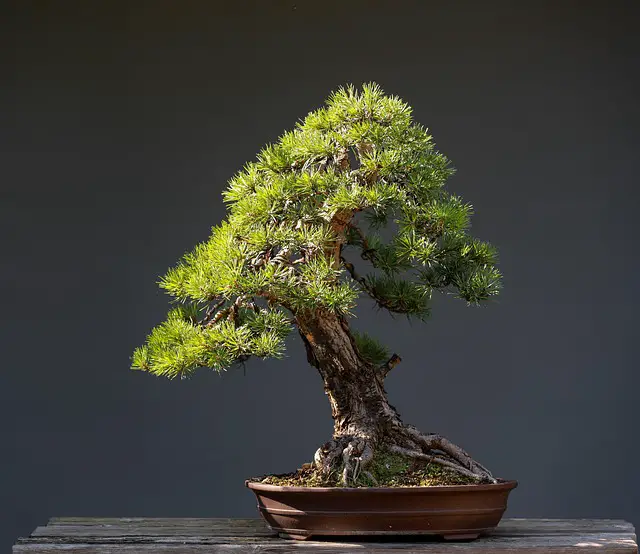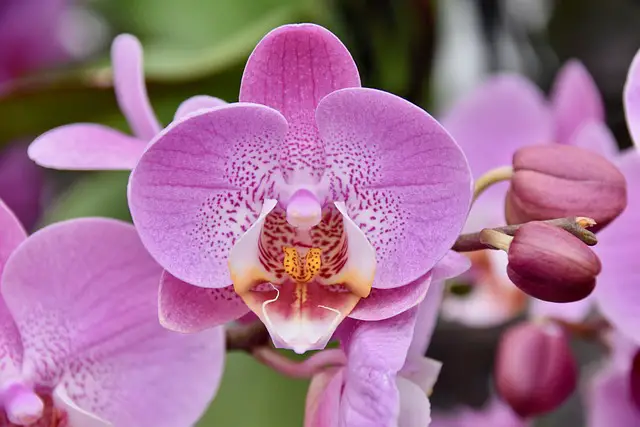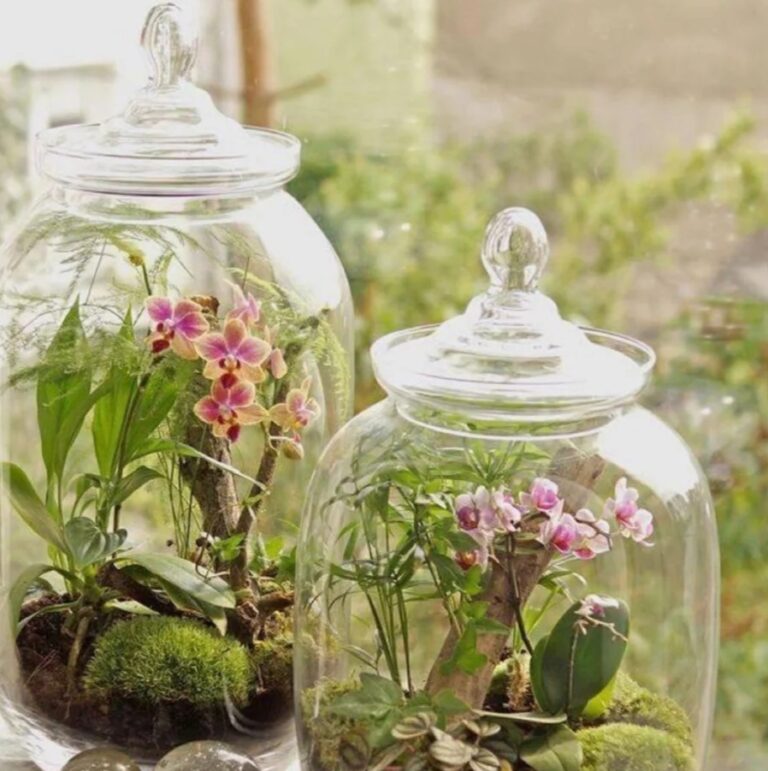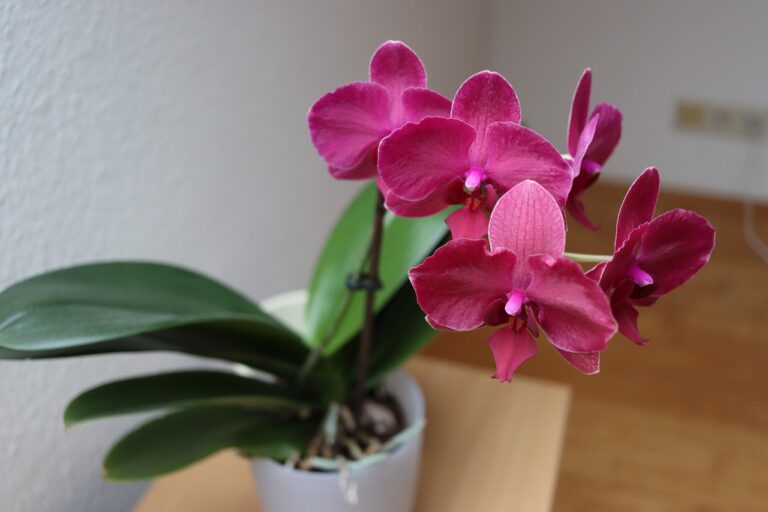Orchids are one of the most captivating and mysterious flowering plants in the world. Despite their beauty, many people find them intimidating to care for. However, with the right knowledge and a little patience, anyone can enjoy these elegant blooms in their home for years to come. Whether you’re a seasoned grower or just starting your orchid journey, here are 22 fascinating things every orchid lover needs to know.
- 1 1. Orchid facts: A World of Diversity
- 2 2. Fascinating Orchid Facts
- 3 3. Orchids Through History
- 4 4. Unique Growth Habits
- 5 5. Beginner-Friendly Orchids
- 6 6. Caring for Orchids
- 7 7. Environmental Needs
- 8 8. Dormancy and Reblooming
- 9 9. Orchid Health and Maintenance
- 10 10. Advanced Tips and Resources
- 11 11. Fans: A Simple Solution for Healthier Orchids
- 12 12. The Role of Temperature Fluctuations
- 13 13. Why Exposed Roots Are Normal
- 14 14. Orchids Are Surprisingly Hypoallergenic
- 15 15. Orchids Can Outlive You
- 16 16. The Science of Fertilisation
- 17 17. Dormancy: Don’t Throw Your Orchid Away
- 18 18. Orchids Are the Perfect Bathroom Plants
- 19 19. A Rewarding Hobby for All Skill Levels
- 20 20. Myths About Orchids
- 21 21. The Ultimate Test: Orchid Roots
- 22 22. Orchids Are for Everyone
- 23 FAQs – Orchid Facts
1. Orchid facts: A World of Diversity
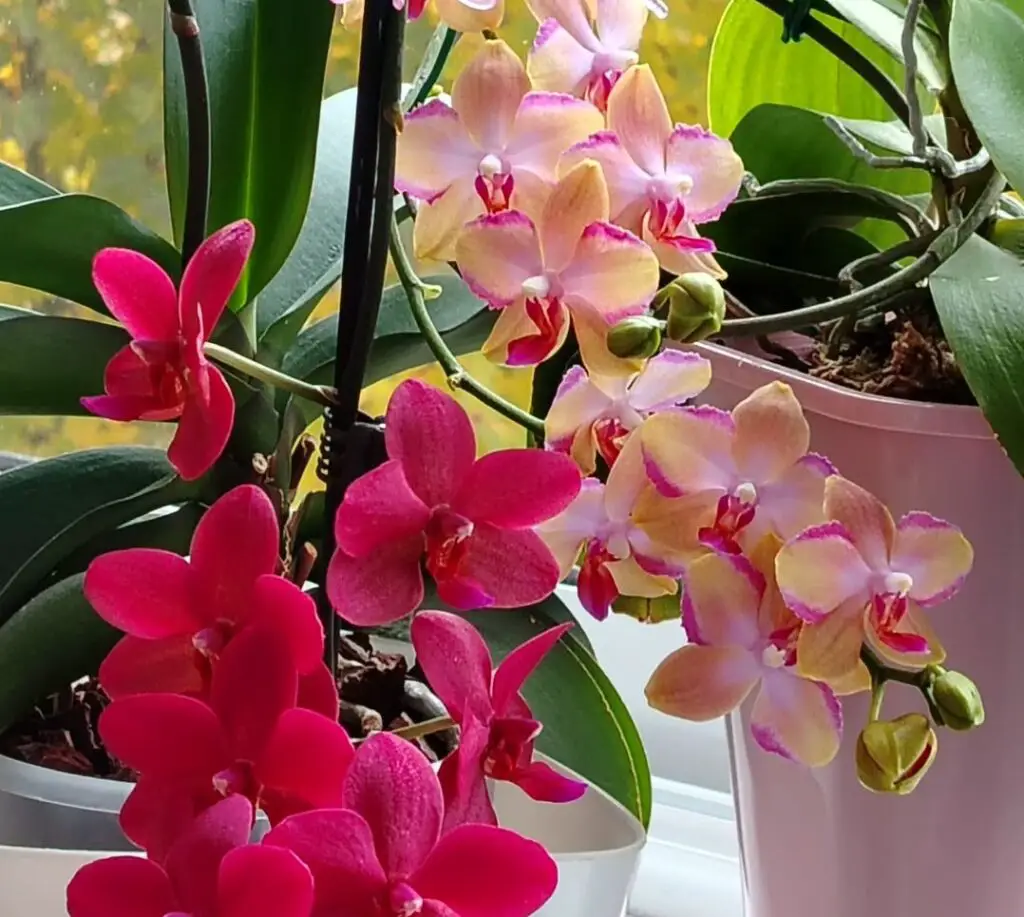
Orchids are the largest family of flowering plants, boasting over 25,000 species and more than 100,000 hybrids. These plants thrive in diverse ecosystems, from the tropical rainforests of South America and Asia to the deserts of Australia and even the Arctic tundra. The only place you won’t find orchids is Antarctica.
In the United States alone, there are more than 200 native orchid species. One of the most common is the lady’s slipper orchid, known for its striking pouch-like flowers.
2. Fascinating Orchid Facts
Vanilla is an orchid.
Surprisingly, vanilla comes from the vanilla orchid, a vining plant native to Mexico. It’s the only orchid grown commercially, prized for its fragrant seed pods used in cooking and baking.
Orchids are Difficult to Grow from Seeds
Orchid seeds are among the tiniest in the plant kingdom, with a single seed pod producing up to three million seeds. However, these seeds lack the nutrients needed to germinate on their own. They require a specific fungus, called mycorrhiza, to grow. This makes growing orchids from seeds incredibly challenging and time-consuming.
3. Orchids Through History
During the Victorian era, orchids became a symbol of wealth and status, sparking a craze known as “orchidelirium.” Wealthy collectors paid exorbitant prices for rare varieties, while plant hunters scoured the globe to find new species. Unfortunately, many orchids didn’t survive due to a lack of proper care knowledge at the time.
4. Unique Growth Habits
Epiphytes vs. Terrestrials
Orchids split into two categories based on their development habits:
Epiphytic orchids grow on trees, using their roots to anchor themselves and absorb moisture and nutrients from the air.
Terrestrial orchids grow in the ground, either with shallow roots or underground tubers.
Understanding your orchid’s growth habit is essential for providing the right care. Epiphytes, like phalaenopsis orchids, thrive in a mix of bark and moss, while terrestrials prefer standard potting soil.
5. Beginner-Friendly Orchids
The phalaenopsis orchid, also known as the moth orchid, is the perfect choice for beginners. These hardy orchids are widely available and easy to care for. Their flowers can last for months, and with proper care, they can rebloom for a decade or more.
6. Caring for Orchids
Repot Sparingly
Unlike most houseplants, orchids prefer to be slightly root-bound. Only repot them when the roots are growing out of the pot or if the plant is in sphagnum moss, which can retain too much moisture. Use a well-draining orchid mix when repotting, and avoid doing so while the plant is in bloom.
Flowers that Last for Months
One of the most rewarding aspects of orchids is their long-lasting blooms. While most flowers fade within weeks, orchid blooms can remain vibrant for months, making them a great investment for home décor.
Fertilise with Care
Over-fertilising is a common mistake. Orchids thrive with a diluted fertiliser applied once a week. Use an orchid-specific fertiliser at half or quarter strength. Skip fertilising during dormancy or when a new flower spike is forming.
Water Wisely
Orchids don’t like to sit in water, so it’s essential to let the potting mix dry out between waterings. Check the moisture level by sticking your finger into the mix. If it’s still damp, wait another day. To keep the leaves hydrated, mist them from time to time.
Ice Cube Watering Debate
Using ice cubes to water orchids is a controversial method. While some worry the cold will damage the roots, studies have shown that orchids watered with ice cubes thrive just as well as those watered conventionally. If this method helps you remember to water, go for it—just ensure the ice doesn’t touch the leaves.
7. Environmental Needs
Bright, Indirect Light
Orchids prefer bright, indirect sunlight. Too much direct sunshine might scorch their leaves, while too little light may prevent them from blossoming. If your orchid isn’t getting enough natural light, consider supplementing with artificial grow lights.
Humidity is Key
Orchids thrive in humid environments, similar to their natural tropical habitats. Bathrooms and kitchens are ideal spots for orchids, as they tend to have higher humidity levels. You can also use a pebble tray or group plants together to increase humidity.
8. Dormancy and Reblooming
After the blooms fade, many orchids enter a dormancy period. This is completely normal and allows the plant to rest before producing new flowers. Reduce watering and fertilising during this time, and keep the plant in a cool, bright location. With proper care, your orchid can rebloom for decades.
9. Orchid Health and Maintenance
The Importance of Healthy Roots
Orchid roots are a great indicator of plant health. Healthy roots are plump and silvery-green, while dry roots appear white. Limp or mushy roots may indicate overwatering, while blackened tips suggest fertiliser burn.
Prevent Pests and Diseases
Orchids are relatively pest-resistant, but stagnant air can lead to problems like mould and fungal infections. Keep the air around your orchids circulating with a fan or by opening a window.
10. Advanced Tips and Resources
Know Your Orchid’s Temperature Needs
Orchids are categorised into warm, intermediate, and cool-growing varieties. Understanding your orchid’s temperature preferences is crucial for its success.
Attend an Orchid Clinic
If your orchid isn’t thriving, consider visiting an orchid clinic. These clinics, often hosted by nurseries or garden centres, provide expert advice and hands-on help for struggling plants.
Orchids are more than just beautiful houseplants—they’re a fascinating and rewarding hobby for plant lovers of all levels. With these tips, you’ll be well on your way to growing healthy, thriving orchids that can bloom for years to come.
11. Fans: A Simple Solution for Healthier Orchids
One of the easiest ways to prevent pest infestations and diseases in orchids is to ensure proper air circulation. Orchids naturally grow in environments with consistent airflow, so stagnant conditions can lead to problems like fungal growth or mould.
A gentle fan near your orchids or simply leaving a window cracked can make a big difference. Just make sure the airflow isn’t too strong, as it could dry out the leaves or disturb delicate flowers.
12. The Role of Temperature Fluctuations
While orchids are tropical plants, they benefit from slight temperature changes between day and night. This natural fluctuation mimics the conditions they experience in the wild and is often a trigger for blooming.
To encourage flowering, place your orchids near a window where nighttime temperatures drop slightly. The key is to avoid extreme changes or cold drafts, which can stress the plant.
13. Why Exposed Roots Are Normal
If you’ve ever wondered why your orchid’s roots are growing out of the pot, don’t worry—it’s completely normal! These aerial roots are common in epiphytic orchids and are designed to absorb moisture and nutrients from the air.
You don’t need to trim these roots unless they’re dead or damaged. Instead, give them a light misting occasionally to keep them hydrated.
14. Orchids Are Surprisingly Hypoallergenic
For allergy sufferers, orchids are a fantastic choice. Unlike many flowering plants, orchids don’t release pollen into the air. Instead, their pollen is stored in waxy packets called pollinia, which are only accessible to specific pollinators. This makes orchids unlikely to trigger allergic reactions.
15. Orchids Can Outlive You
One of the most remarkable things about orchids is their longevity. With the right care, some orchids can live and rebloom for decades. In fact, there are records of orchids passed down through generations.
To ensure your orchid thrives for years to come, focus on consistent care: proper watering, adequate light, and occasional fertilisation.
16. The Science of Fertilisation
While orchids don’t need as much fertiliser as other plants, they do require nutrients to support healthy growth. Most orchid-specific fertilisers follow the “weakly, weekly” rule—apply diluted fertiliser once a week and skip it entirely once a month to flush out any salt buildup.
Avoid fertilising during dormancy or when the plant is in bloom. Over-fertilising can cause root burn and damage delicate tissues.
17. Dormancy: Don’t Throw Your Orchid Away
It’s a common mistake to assume an orchid is dead once its flowers fall off. In reality, most orchids enter a resting phase known as dormancy.
During this period, the plant focuses on conserving energy and growing new roots or leaves. Continue caring for your orchid by watering sparingly and providing bright, indirect light. After a few months, you’ll likely see a new flower spike emerge.
18. Orchids Are the Perfect Bathroom Plants
If you’re wondering where to place your orchid, consider your bathroom. The high humidity levels and indirect light found in most bathrooms mimic the tropical conditions orchids love. Just make sure the room gets enough natural light to support growth.
If your bathroom isn’t well-lit, supplement with a grow light to ensure your orchid stays healthy.
19. A Rewarding Hobby for All Skill Levels
Caring for orchids can be as simple or as involved as you’d like. While beginner-friendly varieties like phalaenopsis require minimal maintenance, more advanced growers can experiment with rare species or hybridisation.
No matter your skill level, orchids are a rewarding way to connect with nature and bring beauty into your home.
20. Myths About Orchids
Many myths surround orchid care, often making them seem more intimidating than they really are. For example:
Myth: Orchids are delicate and hard to grow.
Truth: Many orchids, like moth orchids, are resilient and perfect for beginners.
Myth: Orchids only bloom once.
Truth: With proper care, orchids can rebloom multiple times a year.
Myth: You should water orchids daily.
Truth: Overwatering is one of the leading causes of orchid death.
By separating fact from fiction, you’ll find that orchids are much easier to care for than their reputation suggests.
21. The Ultimate Test: Orchid Roots
Orchid roots tell you everything you need to know about your plant’s health. Here’s how to assess them:
Healthy roots: Silvery-green when dry and bright green after watering.
Overwatered roots: mushy, brown, or black.
Underwatered roots: Thin, brittle, or white.
If you notice unhealthy roots, adjust your watering routine and repot the plant if necessary.
22. Orchids Are for Everyone
Orchids aren’t just for plant experts—they’re for everyone. Whether you’re a beginner growing your first phalaenopsis or an experienced collector hunting for rare species, orchids offer endless opportunities for learning and enjoyment.
By following these tips, you’ll be well on your way to growing healthy, thriving orchids that can bloom for decades. Their beauty, resilience, and fascinating history make orchids a true treasure in the plant world.
FAQs – Orchid Facts
What are some interesting Orchid Facts?
Orchids are one of the largest plant families, with over 25,000 species worldwide. One fascinating Orchid Facts is that some orchids can live for decades with proper care.
How long do orchids live?
One of the lesser-known Orchid Facts is that orchids can live for many years, sometimes even over 100 years, in the wild.
Do orchids need a lot of sunlight?
A key Orchid Facts is that while they need light, direct sunlight can burn their leaves. Most orchids thrive in indirect, bright light.
What is the rarest orchid in the world?
Among the most amazing Orchid Facts is that the Ghost Orchid (Dendrophylax lindenii) is one of the rarest and most elusive orchids.
Can orchids grow without soil?
Yes! A surprising Orchid Facts is that many orchids are epiphytes, meaning they grow on trees and absorb moisture from the air.
Why do some orchids have a fragrance?
One of the coolest Orchid Facts is that many orchids produce fragrances to attract specific pollinators, such as bees, moths, or even beetles.
Do all orchids bloom once a year?
A fun Orchid Facts is that some orchids, like Phalaenopsis, can bloom multiple times a year with proper care
What is the biggest orchid species?
A remarkable Orchid Facts is that the Tiger Orchid (Grammatophyllum speciosum) is the world’s largest, producing clusters of flowers that can weigh over a ton!
How do orchids reproduce?
An essential Orchid Facts is that orchids reproduce through seeds or by producing keikis (baby plants) on their stems.
Do orchids have medicinal uses?
A fascinating Orchid Facts is that some species, like Dendrobium, are used in traditional medicine for their healing properties.
Why do orchid roots grow above the potting mix ?
A useful Orchid Facts is that aerial roots help orchids absorb moisture and nutrients from the air, mimicking their natural habitat.
Are black orchids real?
A debated Orchid Facts is that while “black orchids” exist, they are usually very dark shades of purple or red rather than true black.
What is the easiest orchid to grow for beginners?
A helpful Orchid Facts is that Phalaenopsis (Moth Orchids) are among the easiest to grow and are ideal for beginners.
How can I make my orchid bloom again?
One of the best Orchid Facts to know is that orchids need a drop in nighttime temperature and proper light to trigger reblooming.
